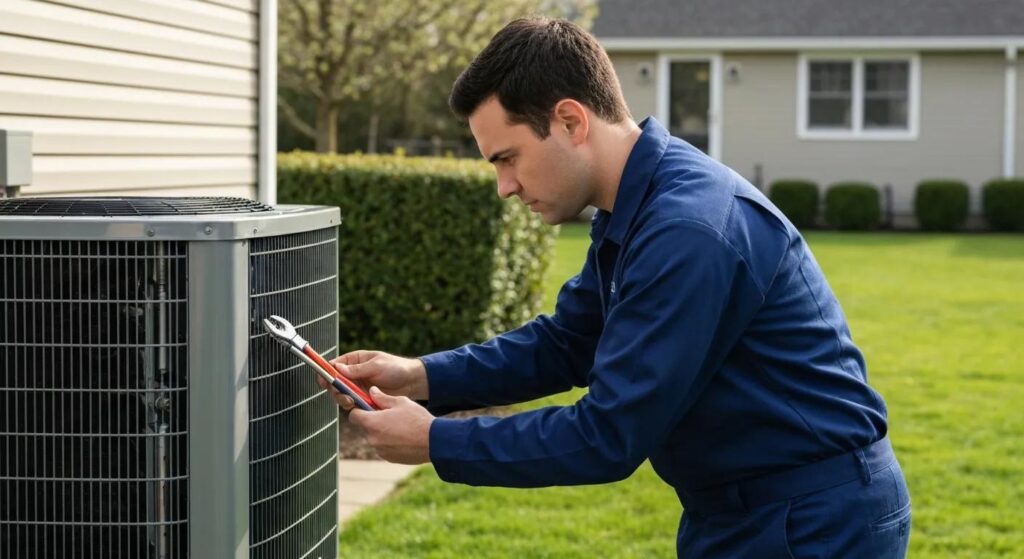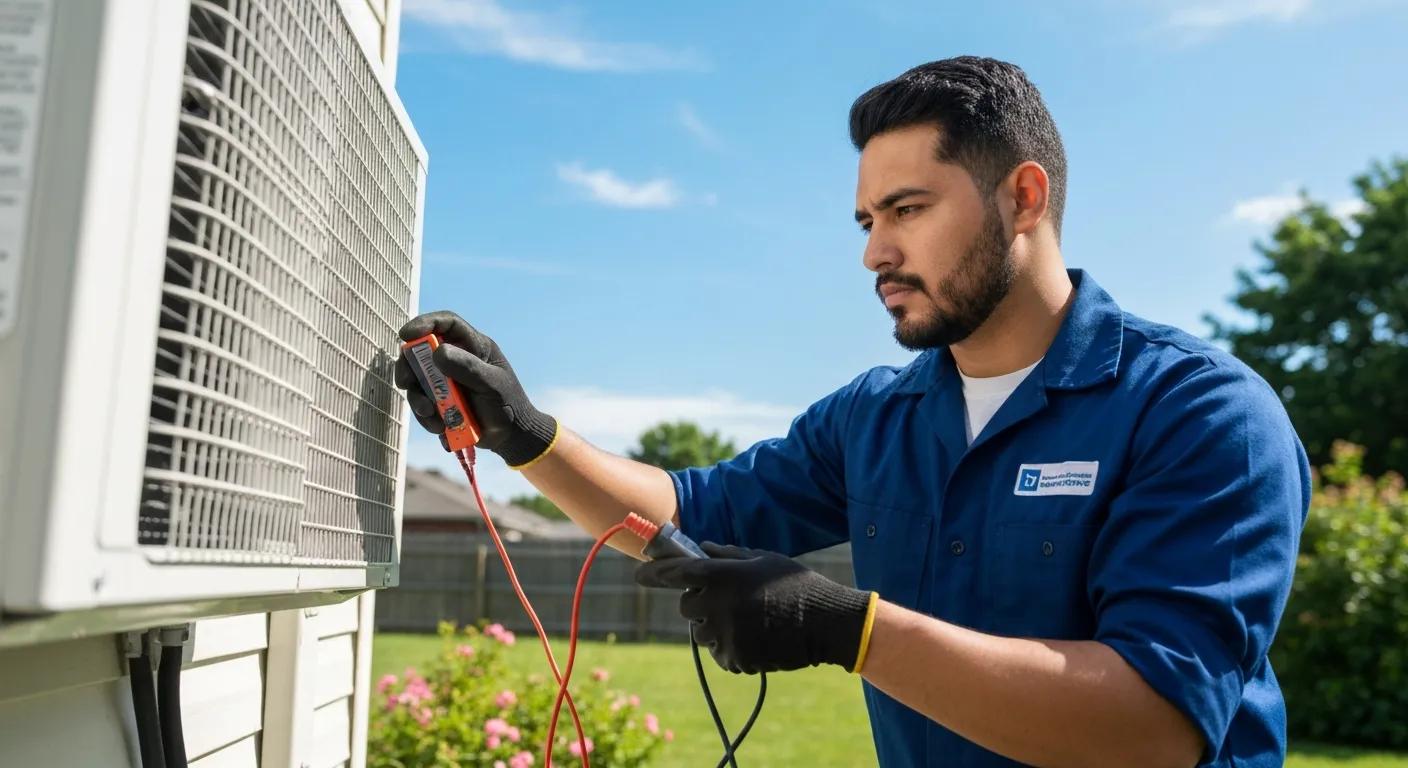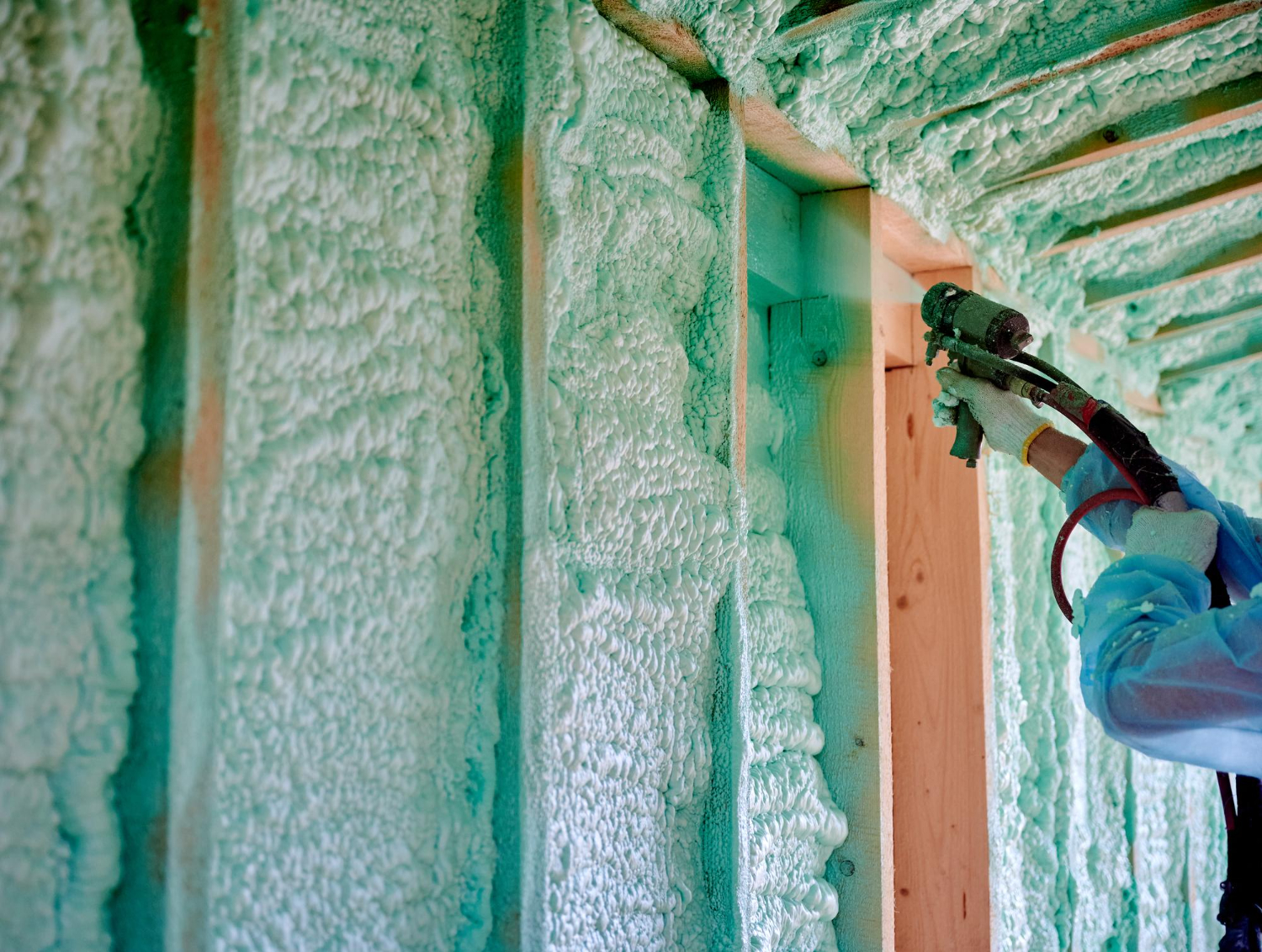Preparing Your HVAC for Every Season — Your Local Maintenance & Tune-Up Guide
Getting your HVAC ready for seasonal change means scheduling a few targeted checks and simple services before weather shifts so your home or business stays comfortable, efficient, and reliable. This guide walks through what seasonal HVAC maintenance looks like for the Greater Killeen Area, why it pays off, and the easy actions that cut energy use and emergency repairs. You’ll find clear, season-by-season checklists for winter, spring, summer, and fall, guidance on when to call a pro, recommended tune-up frequency, and how preventive service helps properties in Killeen, Harker Heights, Copperas Cove, and Kempner. By the end you’ll have actionable checklists, quick-reference tables that show the effects of common tasks, and straightforward next steps for booking service or requesting an inspection.
Why Seasonal HVAC Maintenance Matters for Your Home or Business
Seasonal HVAC maintenance is a schedule of specific tasks—filter changes, coil cleaning, refrigerant checks, thermostat calibration—done at the right times to keep systems safe and efficient. Those actions restore airflow, improve heat transfer, and make sure controls and safety devices work properly. Together they reduce stress on compressors and burners, improve comfort, and cut energy waste. The direct results are lower utility bills, fewer emergency calls, and longer equipment life—benefits that matter for both homes and commercial properties across Greater Killeen’s variable climate. Below are the core advantages a seasonal approach delivers.
Seasonal maintenance gives you three clear benefits:
- Better energy efficiency: Clean filters and coils let your system move air and heat the way it was designed, so it runs less and uses less power.
- Longer equipment life: Catching small issues early prevents accelerated wear on compressors, motors, and heat exchangers.
- Improved indoor air quality and comfort: Filter changes and duct care reduce dust and help control humidity for healthier, more consistent indoor air.
The table below shows common components, the maintenance that helps them, and the operational benefits you can expect. It’s a quick way to see how a few targeted steps create system-wide gains and to understand which tune-ups matter most in each season.
Different maintenance tasks target specific HVAC components and outcomes.
| Component | Maintenance Task | Operational Effect |
|---|---|---|
| Air Filter | Replace or upgrade | Removes particulates, restores airflow, lowers fan energy use |
| Evaporator/Condenser Coil | Clean coils | Improves heat transfer and reduces compressor load |
| Refrigerant Lines | Inspect and top up | Restores cooling capacity and cycle efficiency |
| Thermostat | Calibrate/program | Improves setpoint accuracy and reduces short cycling |
That table highlights how maintenance tasks work together: changing a filter improves airflow and energy use, while coil cleaning directly boosts cooling performance. Knowing these links makes seasonal plans more effective and leads naturally into our winter and summer checklists.
When you’re ready for professional help, The Coolest Air offers AC tune-ups, heater tune-ups, duct cleaning, and other seasonal services across Killeen, Harker Heights, Copperas Cove, and Kempner; contacting our team is the easiest way to schedule an inspection.
How Regular Service Improves Efficiency and Extends Equipment Life
Regular service fixes the common causes of declining performance: dirty filters, fouled coils, leaking ducts, and miscalibrated controls. A fresh filter restores designed airflow so blowers don’t overwork; clean coils let heat move where it should so compressors don’t run longer than necessary. Over time these fixes add up to fewer breakdowns and longer component life. Understanding those mechanics explains why preventive maintenance delivers immediate efficiency wins and protects your long-term investment.
For example: replacing a clogged filter lowers static pressure in the ducts, which reduces fan energy and improves overall airflow. Better airflow helps the evaporator do its job and reduces the risk of icing in cooling season. That simple chain of events shows why homeowner maintenance plus periodic professional inspections keep performance steady.
Key Benefits of Scheduling Seasonal Tune-Ups
Seasonal tune-ups create predictable performance, reduce risk, and keep occupants comfortable. Typical tune-ups include filter changes, electrical checks, lubrication, refrigerant verification, thermostat calibration, and safety control tests—each step prevents a known failure mode from becoming an emergency. For businesses, scheduling during off-hours minimizes downtime; for homes, tune-ups mean steadier temperatures and better indoor air. In the Greater Killeen Area, where summers are hot and cold snaps happen, seasonal tune-ups act like an insurance policy: fewer unexpected breakdowns and no last-minute service rushes.
Next, we’ll apply these principles to practical seasonal checklists starting with winter prep.
How to Prepare Your HVAC for Winter in Killeen and Nearby Areas

Winter preparation focuses on safe, efficient heat delivery: check combustion safety, confirm venting, and reduce heat loss through the building envelope and ductwork. In our area, furnaces and heat pumps move from light use to regular operation—so a pre-winter inspection ensures ignition systems, safety controls, and heat exchangers are sound and airflow is unobstructed. The goal is reliable warmth with minimal fuel or electric waste. Below are practical winter checks and clear signs that mean you should call a technician right away.
Winter prep checklist for homeowners and businesses:
- Inspect or replace the air filter — a clean filter keeps airflow steady and reduces stress on the heat exchanger.
- Test thermostat programming and replace batteries; set reasonable setbacks to save energy without sacrificing comfort.
- Check visible duct seams and weather-strip doors and windows to limit heat loss and even out temperatures.
These DIY steps help, but a professional furnace inspection adds safety and performance checks you can’t do yourself. If you’d rather leave it to the pros, The Coolest Air offers heater tune-ups and safety inspections throughout the Greater Killeen Area to make sure your system starts the season right.
Essential Winter Heater Tune-Up Tasks
A full winter tune-up typically includes replacing or cleaning filters, inspecting the heat exchanger for cracks, testing ignition and flame sensors, checking safety controls (limit switches, rollout sensors), and confirming airflow through vents and returns. Technicians will also check electrical connections, test the blower motor, and verify thermostat accuracy so the system cycles properly. These steps lower carbon monoxide risk, improve combustion efficiency, and reduce the chance of mid-winter failures. Do the basic checks yourself, but leave combustion-system inspections to a trained technician.
Scheduling a professional inspection before peak use reduces the odds of urgent repairs when temperatures drop.
When to Call a Professional for Winter Inspection
Call a technician right away if you smell gas, notice persistent cycling, detect strange combustion odors, or if a carbon monoxide alarm sounds—these are safety issues that require immediate attention. Otherwise, book a check in late fall—ideally before November—so burners, safety controls, and heat exchangers are inspected before continuous winter operation. Early checks also let you schedule service in non-peak times for faster response and lower stress.
Professional inspection is especially important for older systems or properties with sealed combustion appliances where venting and combustion safety must be verified by a qualified tech.
Spring HVAC Tune-Up Best Practices for Harker Heights

Spring tune-ups prepare your system for cooling: inspect outdoor units, clean coils, clear condensate drains, and confirm refrigerant and electrical integrity. In Harker Heights, pollen and shifting humidity can reduce indoor air quality and strain cooling equipment if ignored. Spring maintenance restores cooling readiness, improves humidity control, and removes winter debris from outdoor units to avoid early-season failures. Below is a step-by-step readiness checklist and how spring care improves system performance and air quality.
Spring readiness checklist:
- Clean the outdoor condensing unit: Remove leaves and trim back vegetation so air flows freely.
- Inspect and clean coils and fins: Restore efficient heat exchange to improve cooling capacity.
- Clear the condensate drain and test safety switches: Prevent standing water and mold growth in the drain pan.
Do these tasks before the first hot spell to avoid compressor strain and keep setpoints stable. After your DIY checks, consider a professional AC repair to verify refrigerant levels and electrical safety.
How to Run a Spring HVAC Readiness Check
Start with a visual inspection of the outdoor unit—clear debris, confirm the fan blades are intact, and test startup. Replace or clean filters, confirm the condensate drain flows, and run the cooling cycle briefly to listen for unusual noises or odd cycling. Coil brushing and simple condensate cleanups are safe for confident homeowners, but refrigerant checks and compressor diagnostics should be left to technicians. Early spring checks catch small issues before they turn into mid-summer problems.
Combining homeowner checks with a professional verification keeps your system ready for peak season.
Spring Maintenance: Better IAQ and Performance
Spring services improve indoor air quality by removing accumulated dust from filters and ducts and by clearing microbial growth in condensate pans that can cause odors or spores. Replacing filters and cleaning coils reduces the particulates moving through your space—important during pollen season in Harker Heights. Cleaner coils and correct refrigerant levels also stabilize humidity control, which reduces mold risk and improves comfort. These IAQ improvements go hand-in-hand with better efficiency because clean components transfer heat more effectively and run less.
Tackling IAQ in spring sets your system up for heavy summer cooling and pairs well with duct cleaning when ducts show dust or biological buildup.
Optimizing Your AC for Summer in Copperas Cove
Preparing AC for summer means making sure cooling capacity, airflow, and control strategies meet peak heat while using smart controls to limit runtime during costly hours. In Copperas Cove’s hot months, clean coils, correct refrigerant charge, and good airflow determine comfort and energy use. Pairing mechanical tune-ups with smart thermostat programming and routine monitoring lowers peak demand and reveals early signs of component trouble. Below are the key tune-up steps and how smart thermostats and connected features can boost seasonal efficiency.
Critical summer tune-up steps include cleaning coils, confirming refrigerant charge, inspecting the compressor and contactors, testing capacitors and electrical connections, and measuring airflow across the evaporator. Make sure vents and returns are clear and replace filters to complete the airflow path. These steps restore designed BTU output and prevent compressor overheating under continuous high load. Doing this work before peak heat reduces runtime, evens out indoor temperatures, and lowers the risk of mid-summer breakdowns.
Prefer a pro to verify everything? The Coolest Air offers AC tune-ups tailored for Copperas Cove summers—our techs validate refrigerant and electrical health and suggest smart thermostat settings for seasonal savings.
Critical Steps in a Summer AC Tune-Up
A summer tune-up typically starts with thorough coil cleaning for both outdoor and indoor coils, followed by a refrigerant check and compressor inspection. Techs test capacitor health, check contactors and fan motors, and measure airflow at returns and registers. Replacing filters and ensuring unrestricted returns reduces pressure differentials that stress fans. These actions prevent common summer issues—reduced capacity, short-cycling, and compressor overheating—so your system stays dependable through the hottest weeks.
Getting these checks done before peak heat helps avoid emergency calls and keeps cooling efficient as temperatures rise.
How Smart Thermostats Boost Seasonal Cooling Efficiency
Smart thermostats save energy by using adaptive schedules, remote control, and data-driven holds that cut unnecessary runtime during peak periods. Features like geofencing, learning algorithms, and demand-response integration let the thermostat pre-cool at the right time and avoid wasted energy while the house is empty. Remote alerts on run-times and abnormal cycles can also flag maintenance needs early, prompting service before a failure. Savings vary by household, but smart scheduling consistently reduces cooling hours while keeping occupants comfortable when they’re home.
Pair smart controls with regular tune-ups: efficient equipment reduces runtime, and a smart thermostat makes the most of those lower run-hours.
Fall Furnace Prep for Businesses in Kempner
Businesses in Kempner should prioritize fall furnace prep to ensure reliable heat for staff and customers and to avoid mid-winter disruptions. Commercial systems often need attention to controls, belts, filters, and ventilation paths that differ from residential units. Scheduling off-hour maintenance reduces impact on operations. Duct cleaning and airflow tuning matter for high-occupancy or sensitive environments. Below are critical fall checks for commercial systems and how duct cleaning supports seasonal efficiency across business HVAC assets.
Key fall checks for businesses include verifying building control schedules, testing backup heating sources, replacing commercial-grade filters, and inspecting belts and motors for wear. Confirm economizer dampers and zone controls work correctly to ensure smooth transitions between heating and ventilation modes. Scheduling during off-peak hours preserves business continuity and minimizes disruption. These steps support energy goals and continuity planning.
If ducts show visible dust or you notice airflow imbalances, targeted duct cleaning can restore distribution efficiency and improve indoor air for staff and patrons; coordinate cleaning with fall tune-ups to limit downtime.
Fall Checks That Prevent Winter Breakdowns
Preventive fall checks include testing safety controls, confirming thermostat programming across zones, inspecting heat exchangers and burners for corrosion or cracks, and verifying emergency and backup systems start and run properly. For commercial units, belt tension, motor lubrication, and VFD checks help avoid mechanical failures. Recording control setpoints and run-hour baselines during fall inspections makes it easier to spot anomalies once systems run heavily in winter. These preventative measures cut surprise repairs and keep occupant comfort steady during peak heating months.
Plan these checks in early fall to stay ahead of peak demand and compress maintenance into a manageable window.
How Duct Cleaning Helps During Seasonal Change
Duct cleaning reduces airflow resistance caused by dust and debris, which stops fans and heating elements from working harder than they should. Cleaner ducts lower static pressure, restore designed airflow patterns, and help produce more uniform temperatures across zones—important when switching between heating and cooling. Removing biological contaminants and settled particulates also improves indoor air quality and reduces the load on filters, stretching filter life and cutting maintenance frequency. For busy businesses or those with sensitive indoor environments, duct cleaning as part of fall prep can reduce energy use and support occupant health.
Coordinate duct cleaning with other fall services for a complete seasonal maintenance window that addresses both air quality and mechanical efficiency.
How Often Should You Schedule Seasonal HVAC Maintenance?
Frequency depends on system type, age, and usage: an annual professional tune-up before each peak season is the baseline, with bi-annual checks recommended for older systems or high-use commercial equipment. Planned seasonal inspections reduce emergency calls and keep equipment close to design efficiency, lowering the chance of mid-season failures and smoothing lifecycle costs. The table below lists recommended intervals for core components and the main reason for each interval so owners can prioritize inspections based on local seasonal demands.
| System Component | Recommended Frequency | Primary Reason |
|---|---|---|
| Central AC / Heat Pump | Annual (pre-summer) | Check refrigerant, coils, and electrical safety before peak cooling |
| Furnace / Heater | Annual (pre-winter) | Verify safe combustion, inspect heat exchanger, and test controls |
| Ductwork | Every 2–4 years or as needed | Restore airflow and IAQ when buildup affects performance |
| Thermostat Calibration | Annual | Keep setpoints accurate and prevent inefficient cycling |
Recommended Frequency for AC and Heater Tune-Ups
Plan for at least one professional tune-up per major system each year—AC in late spring and heater in late fall. Properties with older equipment, heavy usage, or commercial operations that run continuously should consider twice-yearly inspections to catch wear earlier. Pair these professional visits with quarterly filter checks and simple visual inspections to keep things steady between service calls. This blend of professional depth and homeowner upkeep keeps costs predictable and equipment performing well.
Scheduling on a predictable annual timeline also makes it easier for service providers to offer off-peak appointment slots.
How Seasonal Inspections Cut Emergency Repairs and Save Money
Seasonal inspections find small problems—loose wiring, low refrigerant, cracked belts—before they become major failures needing emergency replacement or out-of-hours labor. Fixing issues early is usually less costly than replacing parts under duress, and it avoids the premium on emergency service calls. Inspections also stabilize runtime and energy use, lowering utility bills and the total cost of ownership over time. In short, scheduled maintenance turns unpredictable emergency spending into manageable, planned care that protects comfort and capital.
Keeping a maintenance record also helps with asset management and resale. Ready to schedule? The Coolest Air offers local tune-up appointments and free replacement estimates to help you decide the best next steps.
Costs and Value of Regular Seasonal HVAC Services in the Greater Killeen Area
Value from seasonal HVAC services comes from outcomes—energy savings, fewer emergency repairs, and longer equipment life—rather than a single sticker price. Preventive maintenance reduces runtime, lowers peak demand, and cuts unplanned replacements; over time those benefits add up to measurable savings and better comfort. The table below summarizes common services, what they deliver operationally, and the long-term benefits. Local prices vary by system and scope, so use this as a value guide and get a site-specific quote for exact costs.
| Service | Typical Operational Value | Long-term Benefit |
|---|---|---|
| AC Tune-Up | Improved cooling performance and fewer mid-summer failures | Longer compressor life and fewer emergency calls |
| Heater Tune-Up | Safer, more reliable heating | Lower risk of combustion issues and extended furnace life |
| Duct Cleaning | Better airflow and cleaner indoor air | Energy savings from reduced fan work and healthier spaces |
Typical Price Range for AC and Heater Tune-Ups
Tune-up fees vary widely because systems differ in complexity, access, and parts needed. Rather than focusing on a single number, compare the scope of service—filter changes, coil cleaning, refrigerant checks, and electrical verification—against the outcomes you expect, like restored capacity and verified safety. A local site visit gives the most accurate cost estimate and lets a technician spot deferred repairs that could balloon into bigger bills if left until peak season.
Getting a site assessment also helps prioritize fixes that deliver the best immediate value.
How Preventive Maintenance Saves Money Over Time
Preventive maintenance saves money by preserving efficiency, preventing catastrophic failures, and extending equipment life—reducing replacement frequency and emergency labor costs. For example, clean coils and correct refrigerant protect the compressor from overheating, while timely heat exchanger checks avoid dangerous, costly breakdowns. Energy savings from improved efficiency can offset part of the maintenance cost, and avoiding an emergency replacement often outweighs the annual tune-up expense. A scheduled maintenance program turns unpredictable capital risk into predictable operating costs that are easier to budget.
Need help building a cost-effective plan? The Coolest Air can assess your equipment, recommend a maintenance cadence, and provide free replacement estimates tailored to your building and budget.
Recommended Frequency Recap
(See the scheduling guidance above and coordinate visits with local climate patterns.)
| Service | Recommended Frequency | Primary Reason |
|---|---|---|
| AC Tune-Up | Annual (pre-summer) | Maintain cooling capacity and avoid mid-season failures |
| Heater Tune-Up | Annual (pre-winter) | Ensure combustion safety and reliable heat delivery |
| Duct Cleaning | Every 2–4 years | Restore airflow and IAQ when buildup occurs |
How Seasonal Inspections Prevent Emergencies and Cut Costs
Inspections spot early signs—abnormal vibration, arcing, or wear—that commonly lead to breakdowns during extreme weather. Addressing those signs on a schedule avoids premium emergency labor and replacement markups. Inspections also allow technicians to recommend cost-effective measures like minor duct sealing or insulation upgrades that reduce seasonal load and often pay back quickly. A planned maintenance rhythm reduces downtime, improves predictability, and protects both comfort and capital budgets.
If you’d like to turn these benefits into a concrete plan, The Coolest Air can evaluate your equipment and recommend a maintenance schedule tailored to your needs across the Greater Killeen Area.
Preventive-Maintenance Summary
- Replace or inspect air filters every 1–3 months based on use and indoor conditions.
- Schedule an annual AC tune-up before summer and an annual heater tune-up before winter.
- Clean coils, clear condensate drains, and keep outdoor units free of debris each spring and summer.
- Inspect ductwork and consider cleaning when airflow or IAQ issues appear—typically every 2–4 years.
How Often Should You Schedule HVAC Seasonal Maintenance and Tune-Ups?
Timing and consistency matter: align professional visits with the seasonal transitions that come before peak demand, and add routine homeowner checks between pro visits. Annual professional tune-ups before peak cooling and heating are the baseline; increase frequency for older systems, heavy-use commercial equipment, or properties with special IAQ needs. The table below summarizes recommended intervals and the main reasons to help you prioritize and schedule service.
| Component | Recommended Frequency | Primary Reason |
|---|---|---|
| AC system | Annual (pre-summer); bi-annual if older/high-use | Maintain cooling capacity and catch refrigerant/electrical issues |
| Heating system | Annual (pre-winter) | Ensure combustion safety and heat exchanger integrity |
| Ductwork | Every 2–4 years or as needed | Restore airflow and IAQ when buildup impedes performance |
| Thermostat/Controls | Annual calibration | Prevent inefficient cycling and inaccurate setbacks |
Recommended Frequency for AC and Heater Tune-Ups
As noted, aim for at least one professional tune-up per year for each major system—AC in spring and heater in fall. Systems older than 10–12 years or commercial installations that run continuously should add a second check each year. Homeowners should also change filters regularly (quarterly minimum) and visually inspect accessible components seasonally to catch early signs of trouble. Mixing professional checks with routine homeowner care keeps service predictable and systems closer to design performance.
Scheduling visits annually also helps providers plan off-peak appointments for faster, more convenient service.
How Seasonal Inspections Reduce Emergency Repairs and Save Costs
Regular inspections find mechanical or electrical problems—failing capacitors, restricted airflow, small refrigerant leaks—before they turn into major faults under peak loads. Repairing those issues on a schedule is usually less expensive than emergency fixes and avoids the disruption of system downtime. Over time, savings from fewer replacements, lower energy use, and reduced emergency labor typically outweigh the cost of routine tune-ups, making preventive maintenance a practical financial choice.
Contact The Coolest Air to build a maintenance schedule that fits your building’s use and equipment age and that aligns with local seasonal needs.
Costs and Value of Seasonal HVAC Services in the Greater Killeen Area
(Refer to the earlier value discussion and consult local providers for precise, site-specific estimates.)
| Service | Typical Value/Outcome | Long-term Benefit |
|---|---|---|
| AC tune-up | Restored cooling output and reduced runtime | Fewer emergency repairs and extended compressor life |
| Heater tune-up | Verified safety and steady heat delivery | Lower replacement risk and sustained efficiency |
| Duct cleaning | Improved airflow and lower particulate levels | Energy savings and healthier indoor air |
How Preventive Maintenance Saves Money Long-Term
Preventive maintenance lowers long-term costs by cutting emergency breakdowns, keeping systems efficient, and delaying premature replacements. Regular attention to filters, coils, ducts, and controls prevents small inefficiencies from becoming expensive failures. A strategic seasonal tune-up program produces steadier performance, predictable service costs, and healthier indoor environments—turning unpredictable risk into manageable recurring care that protects comfort and capital.
If you’re building a seasonal plan, The Coolest Air can help prioritize work, coordinate appointments, and point you to the highest-return interventions for Killeen and surrounding communities.
Frequently Asked Questions
What are the signs that my HVAC system needs immediate attention?
Immediate attention is required if you hear loud or unusual noises, smell gas or burning, experience inconsistent temperatures, or notice rapid cycling. A sudden spike in energy bills or persistent poor indoor air quality are also warning signs. Deal with these issues promptly to avoid bigger, costlier repairs.
How can I improve indoor air quality through HVAC maintenance?
Improve IAQ by changing filters regularly, scheduling duct cleaning when needed, and ensuring proper ventilation. High-efficiency filters and supplemental air cleaners help in high-pollen or high-pollution seasons. Seasonal tune-ups also keep humidity and airflow in healthy ranges, which supports better indoor air.
What should I do if my HVAC system is not cooling effectively?
First check thermostat settings and mode, then inspect and replace a dirty filter. Clear debris around the outdoor unit and make sure vents aren’t blocked. If those steps don’t help, call a technician to check refrigerant levels, coils, and other components.
Are there any DIY maintenance tasks I can perform on my HVAC system?
Yes—replace or inspect filters every 1–3 months, remove debris from the outdoor unit, check thermostat batteries and settings, and keep vents and registers clear. These simple tasks extend equipment life and help maintain efficiency between professional visits.
How do seasonal changes affect HVAC performance?
Seasonal shifts change temperature and humidity, which increases demand on heating or cooling systems and accelerates wear. Regular seasonal maintenance prepares your system for those shifts—cleaning coils in spring, checking combustion systems in fall—so it can meet the season’s demands without breaking down.
What are the benefits of using a smart thermostat with my HVAC system?
Smart thermostats improve comfort and save energy by offering adaptive schedules, remote control, and usage reports. Features like learning algorithms and geofencing reduce run-time when you’re away and can alert you to abnormal cycles that indicate a maintenance need. Pairing a smart thermostat with tune-ups gives you the best of both mechanical and control-side savings.
How can I find a reliable HVAC service provider in my area?
Ask neighbors or local businesses for recommendations and check online reviews. Look for companies with proper licensing, insurance, and clear service descriptions. Ask about maintenance plans, guarantees, and whether they provide written estimates and itemized reports—these help you compare providers and choose a reliable partner.
Conclusion
Regular seasonal HVAC maintenance keeps systems running safely, efficiently, and quietly year-round. With a mix of simple homeowner checks and yearly professional tune-ups, you’ll reduce emergency repairs, lower energy costs, and extend equipment life. Don’t wait for a breakdown—take a proactive step and schedule your seasonal maintenance. Contact The Coolest Air to explore tailored service options for your needs in the Greater Killeen Area.





